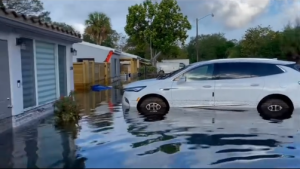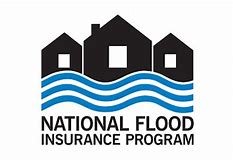Florida’s resiliency efforts, NFIP reauthorization
 Sea level rise could eventually impact one-million Florida buildings by the turn of the next century, how Florida is tackling flood resilience with new legislation, plus a new reauthorization bill for the National Flood Insurance Program includes incentives for the private flood insurance market. It’s all in this week’s Flood Digest.
Sea level rise could eventually impact one-million Florida buildings by the turn of the next century, how Florida is tackling flood resilience with new legislation, plus a new reauthorization bill for the National Flood Insurance Program includes incentives for the private flood insurance market. It’s all in this week’s Flood Digest.

Credit: Reimphoto
Sea Level Rise: The analytics and consulting firm HighTide Intelligence reports that among Florida’s 35 coastal counties, a 1-in-100 year storm, buoyed higher by rising sea level, would:
- Flood at least 1.28 million buildings, with a potential for $261 billion in losses (2020 dollars).
- By 2030, with rising sea levels, it’s 1.3 million buildings and $270 billion.
- By 2050, it’s 1.6 million buildings and $321 billion in losses.
- By 2100, it’s 2.4 million buildings and $624.5 billion in losses.
The firm is offering its HighTide platform for government and Arkly for homeowners to assess floor risk by address. The firm is involved in a three-year study of risk in Satellite Beach, Florida, largely funded by a $275,000 grant the city received from the Florida Department of Environmental Protection.
NOAA’s latest sea level estimates for the country show coastal water levels rising 10-12 inches on average by 2050. The Gulf Coast will have the largest increase of all coasts with an estimated 14”-18” rise.

Florida’s Resilience Push: With the new state fiscal year having begun July 1, so too have these important flood resilience program enhancements passed by the Florida Legislature:
- House Bill 111 expands the Sea Level Rise Impact Projection (SLIP) studies beyond the coastal construction zone. Previously SLIP studies were required only for publicly funded construction projects in coastal areas but under HB 111 the studies are required for publicly funded construction projects in any area threatened by sea level rise.
- Florida’s five water management districts can now access Resilient Florida grants used to support both planning for and construction of flood resilient projects
- The legislature expanded the use of the planning grants to include feasibility studies and to offset the cost of permitting for nature-based solutions that reduce the impact of flooding and sea level rise.
- The state budget this new fiscal year includes $327.5 million for resilience planning and infrastructure: $300 million to the Resilient Florida Flooding & Sea Level Rise Resilience Plan; $20 million to Resilient Florida Planning Grants; $5.5 million to the Flood Hub; and $2 million to Regional Resilience Coalitions.
The American Flood Coalition has some interesting blogs on similar resilience efforts in Texas, plus a great explainer on using watersheds to manage flood risk.
 NFIP Reauthorization: The annual effort is underway again in Congress to reauthorize the National Flood Insurance Program (NFIP) for a five-year period. The bill by US Senators Bob Menendez (D-NJ) and Bill Cassidy (R-LA) is nearly identical to past efforts. It includes an annual premium cap increase of 9%, caps Write-Your-Own insurance company commissions at 22:5% and has various claims process reforms, while increasing funding for mitigation and mapping. You can read more in Senator Menendez press release here.
NFIP Reauthorization: The annual effort is underway again in Congress to reauthorize the National Flood Insurance Program (NFIP) for a five-year period. The bill by US Senators Bob Menendez (D-NJ) and Bill Cassidy (R-LA) is nearly identical to past efforts. It includes an annual premium cap increase of 9%, caps Write-Your-Own insurance company commissions at 22:5% and has various claims process reforms, while increasing funding for mitigation and mapping. You can read more in Senator Menendez press release here.
Florida Senator Rick Scott has introduced his own legislation, two of which encourage growth of the private flood insurance market. His NFIP reform legislation includes:
- The Removing Barriers to Private Flood Insurance Act to permanently eliminate the NFIP’s Write Your Own (WYO) company non-compete clause which currently prohibits WYO companies from selling private flood insurance products that compete with NFIP products;
- The Flood Insurance Consumer Choice Act to amend the NFIP’s “Continuous Coverage” requirement and allow NFIP policyholders who leave the program to purchase a private policy to return to the NFIP without penalty; and
- The Flood Insurance Transparency Act to require the Federal Emergency Management Agency (FEMA) to make detailed historic claims, policy and flood risk data available to the public and easily accessible, while protecting personal information as required by law..
LMA Newsletter of 7-10-23

